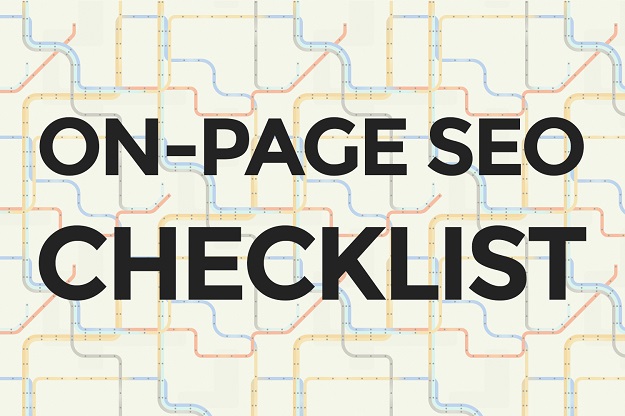Think again if you want a high-performing website without focusing on technical SEO. Regarding organic traffic and rankings, technical SEO is ground zero. Poor technical expertise will dramatically lower your traffic potential, regardless of how original your content is or how many unique links you get. But have no dread! In this piece, we’ll delve into the fundamental ideas of technical SEO, provide a high-level review of the topic, and point you toward proper additional reading.
Explain the Concept of Technical Search Engine Otimization
Optimizing how search engines interact with your content by crawling, rendering, and indexing is known as technical SEO. Boosting your site’s technical SEO helps search engines comprehend your content, improving overall SEO. When search engines can’t correctly interpret or access your website due to underlying technical flaws, the content and link-building advantage you receive is diminished.
Is SEO That Crucial?
Search engine optimization (SEO) plays a vital role in effective promotional strategies. The majority, or 53%, of a site’s visitors, come through organic search results. Because of this, the SEO market is expected to grow to a whopping $122.11 billion by 2028. Brands, enterprises, and organizations of all sizes may benefit from SEO since it directly impacts their bottom lines.
People often start their quest to travel somewhere, do something, obtain information, conduct research, or acquire a product or service by performing a search. However, modern-day searches are highly dispersed. Users can use various resources, including popular search engines like Bing and Google, social media sites like YouTube and TikTok, and online shopping sites like Amazon.
Every year, a staggering number of searches are performed. Being “search engine friendly” on any platform where people can search for your brand or business is crucial, as search is frequently the primary source of website traffic. Due to the tremendous competition for organic search results and the prevalence of paid search ads, any boost in exposure and page rank can have a dramatic effect on revenue. SERP components include knowledge panels.
Search engine optimization (SEO) is a method of attracting the customers your company needs to succeed. Confidence in a website’s ability to provide helpful information is a significant factor in Google’s ranking algorithms.
A Checklist for Search Engine Optimization (SEO) Technical Issues

Your website needs specific technical characteristics to rank higher in search engine results, such as a secure network, a completely responsive design, and a fast-loading time. To guarantee that your technical SEO is current, follow this checklist of essential chores. Do you run a company from a computer? Check out these search engine optimization tools if you want more people to visit your website.
1. Secure Sockets Layer
SSL is a security protocol for establishing an encrypted link between a web server and a browser. Sites protected by SSL can be identified by their URLs, which begin with “https://” rather than “http://.”
Google announced in 2014 that they wanted “HTTPS everywhere” and would prioritize HTTPS-secured sites in search results. =
Therefore, you should take all appropriate measures to protect your website. This is accomplished by installing an SSL certificate on your site, albeit these days, most of the best website builders already include SSL as a basic feature.
2. Make sure your site works well on mobile devices
A website built with a responsive design is easy to read and use on any device. Google’s algorithms provide significant weight to how mobile-friendly a website is. Because of Google’s “mobile first” approach to indexing material, a responsive website is more important than ever. It is rational to check that your website looks great on all devices, including mobile phones, tablets, and desktop computers.
3. Remove All Duplicate Content
Duplicate content can be used to manipulate SERPs and drive higher traffic, but it also confuses readers and bots. Because of its negative impact on their rankings, search engines such as Google and Bing advise web admins to fix any instances of the same material they discover.
4. Website registration with Bing Webmaster Tools and Google Search Console
If you want Google or Bing to crawl your site, you can use their respective free webmaster tools, Search Console and Bing Webmaster Tools. Your site won’t appear in search engine results until its XML sitemap has been submitted to Google Search Console and Webmaster Tools.
How Can Technical SEO Metrics Be Calculated?
Site managers have a lot of technical indicators to track, but here are a few of the more important ones:
1. How Fast a Page Loads
Site visitors are more likely to return if they have a positive experience while on your page if they load quickly. Here are some technical tweaks that can make your site load faster:
# To host soon, use this.
# Put to use a CDN (Content Delivery Network).
# Avoiding unnecessary HTTP requests.
# Replacing several stylesheets or in-line styles with a single CSS stylesheet.
# Minimizing image file size without compromising quality is the goal of image optimization.
# Condensing online content.
# Decreasing re-routes.
# Remove unnecessary whitespace from your website’s code using the “minify” command.
2. Pages Indexed
Search engines will only be able to find it once search engines have indexed your information. If you want your pages to appear in Google’s search results but are worried that the search engine might have trouble finding them, checking to see which ones have already been indexed is an excellent place to start. Check out the Coverage Report in Google Search Console to see which pages have been indexed (more on this later).
3. Crawl Errors
Crawl errors occur when a search engine cannot access a specific page on your site. Site or URL issues are the most common causes of crawl failures. Errors on your site could be anything from a malfunctioning server or DNS to a botched robots.txt. For example, submitting a NOINDEX page for indexing is an example of a URL mistake. Search engine rankings can take a hit if search engines think your site needs to be addressed due to many crawl mistakes.
4. Mobile-Friendly Design
Google has begun using mobile-friendly versions of all new pages for ranking and indexing purposes since 2018. Mobile-first indexing describes this approach. Your search engine rankings will only improve if your site is mobile-friendly. The following measures need to be more technically focused, yet they can reveal technical flaws you might have missed.
Conclusion
You have adopted an SEO strategy and established SMART SEO objectives. You have mastered the art of monitoring exposure, sales, and clickthrough’s. No more obstacles should prevent you from dominating the first page of Google results. Unfortunately, technological difficulties that make your site difficult or impossible to find and use could be the silent SEO killer you haven’t considered. It’s time to take technical SEO metrics seriously.

